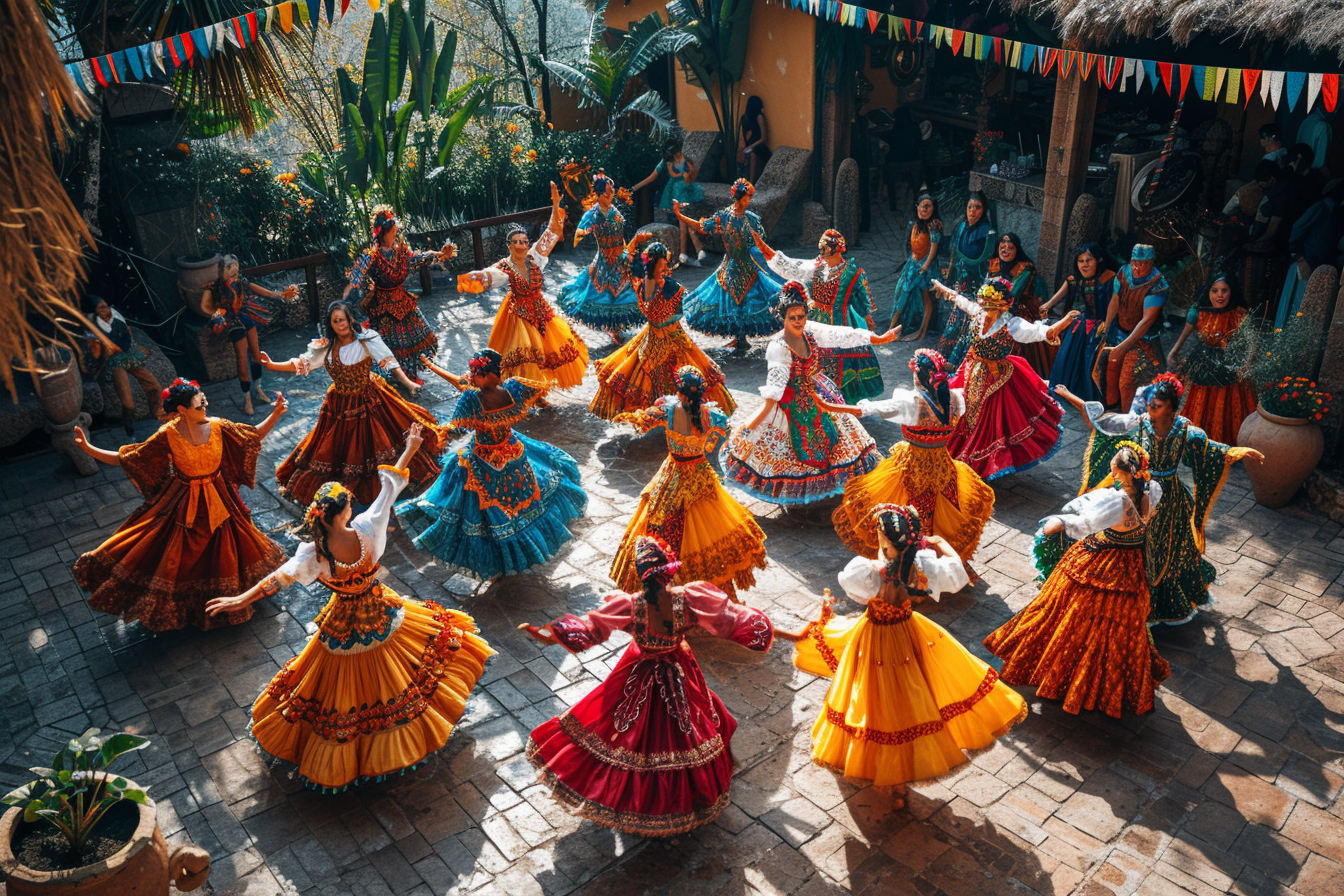Traditional folk dances are vibrant threads woven into the cultural fabric of societies around the globe. These dances hold a mirror to the rich tapestry of history and tradition that characterizes distinct communities. They are not mere performances; they are living, breathing statements of identity, heritage, and communal values. Each step and music note embodies the spirit of bygone eras and the shared experiences of people. Delving into the origins, styles, and cultural significance of these dances offers fascinating insights into the heart of each community.
Origins of folk dance
Folk dances emerged organically within communities, reflecting their way of life, beliefs, and customs. Rooted in the soil of everyday existence, these dances often began as part of rituals, religious ceremonies, or celebrations. Over time, they evolved, gathering elements of the changing world around them, yet often preserving the core essence that marked their inception.
Ritualistic beginnings and celebratory functions
Many traditional dances started within a ritualistic context. For instance, agricultural societies performed dances to venerate the forces of nature that blessed them with good harvests. Dance provided a medium to express gratitude or to appease deities for favorable conditions. Celebration dances, on the other hand, marked important life events such as births, marriages, and victories.
Social gatherings and storytelling
With the passage of time, folk dances often became central to social gatherings and storytelling. They served as a communal activity that reinforced social bonds and taught younger generations about their history through enacted tales. The fluid narratives of folk dances allowed them to adapt continually, ensuring they remained relevant and reflective of the people they represented.
Diverse styles of folk dance
Folk dance styles are as varied as the cultures they originate from. No two dances are alike; each moves to the unique rhythm of its cultural heartbeat.
Circle and line dances
Prevalent in many cultures are circle and line dances, where dancers join hands or follow a lead dancer, moving in unison. These formations symbolize unity and egalitarianism within the community. The hora of Eastern Europe and the sirtaki of Greece exemplify the circle dance’s power to bind participants in a shared experience.
*Solo and partner dances**
Solo dances allow individual expression within the collective tradition, often highlighting specific skills or aesthetics. Partner dances, conversely, depict relationships and interactions, ranging from the courtship mimicry in polkas to the complex narratives in Indian classical dances.
*War and weapon dances**
Certain dances arise from martial traditions, where the movements mimic combat or weapon handling. The Cossack dances from Ukraine and Russia or the stick dances from various cultures magnify the valor and fighting spirit of their warriors through choreographed sequences.
*Imitative dances**
Some folk dances mimic the movements of animals or elements of nature. These imitative dances serve to teach, tell stories, and express respect for other living beings and the environment.
Cultural significance of folk dance
The cultural significance of folk dance cannot be overstated. These dances are historical records, instructional tools, and means of preserving language and tradition.
*A living history**
Folk dances capture pivotal moments in a community’s history. They act as living museums, displaying the past’s influence on the present. Through dance, stories of community struggles, triumphs, or significant changes are passed down, enabling younger generations to understand and celebrate their heritage.
*Social education**
Beyond history, dances serve as social textbooks, teaching etiquette and the values and norms of the community. They reinforce roles and responsibilities and help ingrain the collective wisdom of the community in its members.
*Cultural identity and pride**
In a globalized world, folk dances are assertions of cultural identity and pride. They offer a sense of belonging and a connection to ancestral roots, strengthening communal identity amidst external influences.
*Cross-Cultural bridges**
When shared, folk dances become bridges that span cultural divides, fostering understanding and appreciation among different people. The joy and storytelling inherent in folk dances make them accessible and enjoyable, providing common ground for diverse audiences.
*Folk dance as art**
Despite their traditional roots, folk dances are dynamic art forms. They adapt and evolve, absorbing contemporary influences without losing their identity. Choreographers and dancers breathe new life into old forms, ensuring that folk dances remain vibrant and relevant.
*Heritage preservation**
Many communities recognize the importance of preserving their folk dance traditions. In the modern era, this has led to the documentation and formal teaching of folk dancing, guaranteeing its transmission to future generations.
*Dance as a health and social activity**
The rises in folk dance revivals also highlight the activity’s benefits for health and social connectivity. As people search for meaningful exercise and community engagement, folk dancing has seen renewed interest.
The global landscape of folk dance
From the intricate footwork of Irish jigs to the disciplined elegance of Japanese bon dances, the global landscape of folk dance is spectacularly diverse. Celebrated worldwide, festivals and cultural programs showcase these dances, allowing them to charm audiences far beyond their places of origin. International dance groups and schools have sprouted up, teaching these styles to those who seek cultural enrichment through the art of movement.
Strong efforts are made to keep these traditions alive and thriving. UNESCO, for example, has listed several folk dances as Intangible Cultural Heritage, recognizing their value to humanity and the need for their protection and promotion.
Traditional folk dances are more than entertainment; they are a way of life, a collective memory, and a canvas upon which societies paint their ongoing stories. Each dance step taken is a connection to the past, a celebration of the present, and a hopeful step into the future. As these traditions are embraced and shared, they reveal the enduring charm and essential nature of cultural expression through movement.
Delve deeper into these rhythmic expressions, and one may find not only the pulse of different cultures but also the shared heartbeat of humanity. Understanding folk dances is to understand the people who perform them, inviting a richer, more nuanced appreciation of the singular beauty of the world’s manifold communities.

Leave a Reply